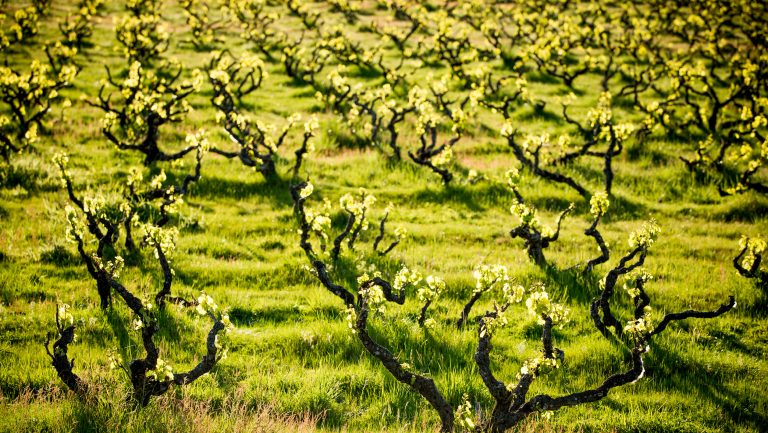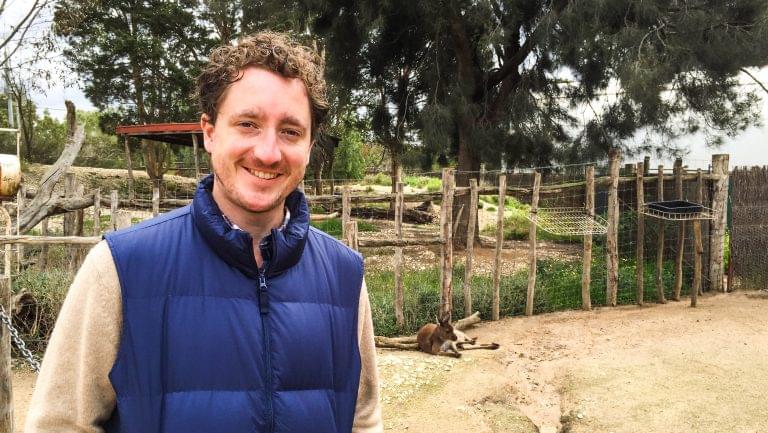Shiraz is practically synonymous with Australia, but as interest in the country’s other grape varieties increases, the narrative about Australian wine is expanding in ways that challenge preconceived ideas about style and quality. A number of wines made from varieties that aren’t commonly associated with Australia are beginning to gain traction outside the country. SevenFifty Daily recently spoke with wine professionals in both Australia and the U.S. to find out which varieties are emerging and helping to tell the new story of Australian wine.
Invoking the Rhône Valley
Gayle Bartscherer, the senior vice president of International Marketing and Business Development for Jackson Family Wines based in Santa Rosa, California, points to Grenache and Roussanne from the company’s Yangarra Estate in McLaren Vale, South Australia, as strong examples of wines that have attracted this increased recognition. “Our wines,” says Bartscherer, “are from single blocks on the estate and show a more elegant style and texture than most Americans have previously seen from Australia.”
Winemaker Ben Haines of Ben Haines Wines in Northcote, Victoria, has observed a flourishing diversity of grape varieties in Australia’s wine industry that he says has led to a new platform for experimentation. He produces Marsanne and Roussanne in the Yarra Valley, and sees these varieties as “largely responsible for the revival of Australian wine in recent times.”

Don’t miss the latest drinks industry news and insights. Sign up for our award-winning newsletters and get insider intel, resources, and trends delivered to your inbox every week.
This sentiment is further echoed by Lauren McPhate, a wine specialist at Tribeca Wine Merchants in New York City. “Alternative varieties are a great way to rebrand Aussie wines in the eyes of Americans,” says McPhate. “They’re high quality and offer a taste of something unconventional.” Among its Australian offerings, Tribeca Wine features a Marsanne by the family-owned Tahbilk winery in Central Victoria’s Nagambie Lakes Region, as well as a Viognier from By Farr in Bannockburn, Victoria.

Defining Australia’s grape varieties—beyond Shiraz—can be somewhat fluid, depending on the market being addressed. For example, Grenache, while not considered “lesser known” in the Australian domestic market, is a variety that has yet to be fully discovered by the U.S. Jane Lopes, formerly a sommelier at Eleven Madison Park in New York City and now the wine director at Attica in Melbourne, is quick to single out Grenache from Australia as a wine to watch. “I think the sandy soil, 13.5% ABV, and pale, transparent, lifted style of Grenache is so unique to Australia,” she says. “The wines are really pretty juicy, complex, easy to drink, affordable, and very cool.”
Australian Grenache has a rich history—the country is home to some of the world’s oldest producing vines, at Cirillo Estate Wines in the Barossa Valley, South Australia. Sierra Reed, the founder and winemaker of Reed Wines in Victoria, whose wines have appeared on lists at restaurants like The French Laundry in Yountville, California, and The Fat Duck in London, sees the combination of old vine material and a restrained approach to production as part of what has contributed to her success with Grenache in the U.S. market. She describes her Grenache as “a super-light-bodied style [made from] very old vines that yield [mere] grams per vine to give an undeniably [fruity] and savory style with an incredible perfume.” Her wines, she explains, “come from vineyards [that yield strong] concentration in fruit and hundreds of lean and light layers, making a delicious, smashable drink. There is a delicacy about the wines that people gravitate toward and that breaks the mold of what they think Australia is.”

As white counterparts to Grenache, Australian wines made from Marsanne and Roussanne are experiencing some success in the U.S. as well, particularly in restaurants. Beyond the quality and versatility they embody, another thing these wines have going for them is the snapshot they provide of an Australian lifestyle. “These wines have been created with local cuisine in mind—seafood, fresh produce,” says McPhate, “so this is a great way to position them in restaurants globally.” Bartscherer shares this view and says of the Yangarra wines, “These wines do best in restaurants for a couple reasons—their style is refined and well suited to food, and there’s an opportunity to hand-sell and introduce guests to more under-the-radar varieties from unexpected regions.”
Drawing Inspiration from Other European Regions
In addition to the Rhône Valley, other important areas where Australian winegrowers are finding inspiration and sourcing grape material are Italy, the Iberian Peninsula, and Greece. For example, Jim Barry Wines in Clare Valley, South Australia, began producing the first Assyrtiko in Australia in 2012. S.C. Pannell in McLaren Vale produces a blend of Tempranillo and Touriga. Interestingly, some Italian producers have even contacted Chalmers Vineyard and Nursery in northwest Victoria to request cuttings for Sangiovese clones that they weren’t able to locate in Italy.
Australia offers an array of wines that acknowledge the traditional producers of these grape varieties but bear a distinctly Australian style. Often that’s a style of approachability, which is useful as an introduction for consumers to a particular variety or as an avenue for offering wines that are ready to drink earlier than traditional expressions might be. Lopes notes that Australian versions of Italian varieties, such as Nebbiolo and Sangiovese, are “very varietally correct in general but tend to have a little bit more fruit and a little less structure—not dramatically so that you can’t recognize it as what it is”—and this, she suggests, provides an important point of difference.

Making the Case for Australian Wine
Your excuses for not carrying Australian wine are outdated—here’s why
Reed, speaking of taking her Nebbiolo to the U.S. market, says, “Nebbiolo has a really strong following because of Barolo, but Nebbiolo coming from Australia in a light-bodied style generates a lot of interest.” She adds that the area where she cultivates her Nebbiolo—Heathcote, in central Victoria—produces wines “so varietally correctly that it blows people’s minds.” Unlike Barolo, she says, her Nebbiolo “is not a massive red, and so it defies expectation and is literally the first thing I sell out of.”
Enthusiasm for Australia’s other grape varieties has been growing for some time in the domestic market, as evidenced by the Australian Alternative Varieties Wine Show. The show began in 2001 with a mere 63 entries; in 2018 there were more than 800, with an extraordinary number of varieties represented. Now the baton is passing to importers, retailers, and hospitality professionals in the international market—it’s their turn to represent the story of authenticity, quality, and passion as it’s unfolding in the world of Australia’s new wines. In the words of winemaker Brendan Carter of Unico Zelo in Gumeracha, South Australia, it’s “a story of Australian soils, of Australian people, and of Australian culture—and the world deserves to hear, smell, and taste it.”

Dispatch
Sign up for our award-winning newsletter
Don’t miss the latest drinks industry news and insights—delivered to your inbox every week.
Simone Madden-Grey is a freelance writer from New Zealand who now lives in Melbourne, Australia. After completing the WSET Diploma, she was awarded the HKIWSC Scholarship for earning the highest mark in Asia, and in 2018 she was the Fellow at the Australian Alternative Varieties Wine Show. As the owner of Happy Wine Woman Consultancy, she provides writing, education, and cellar management services to industry and private clients across Australia.






